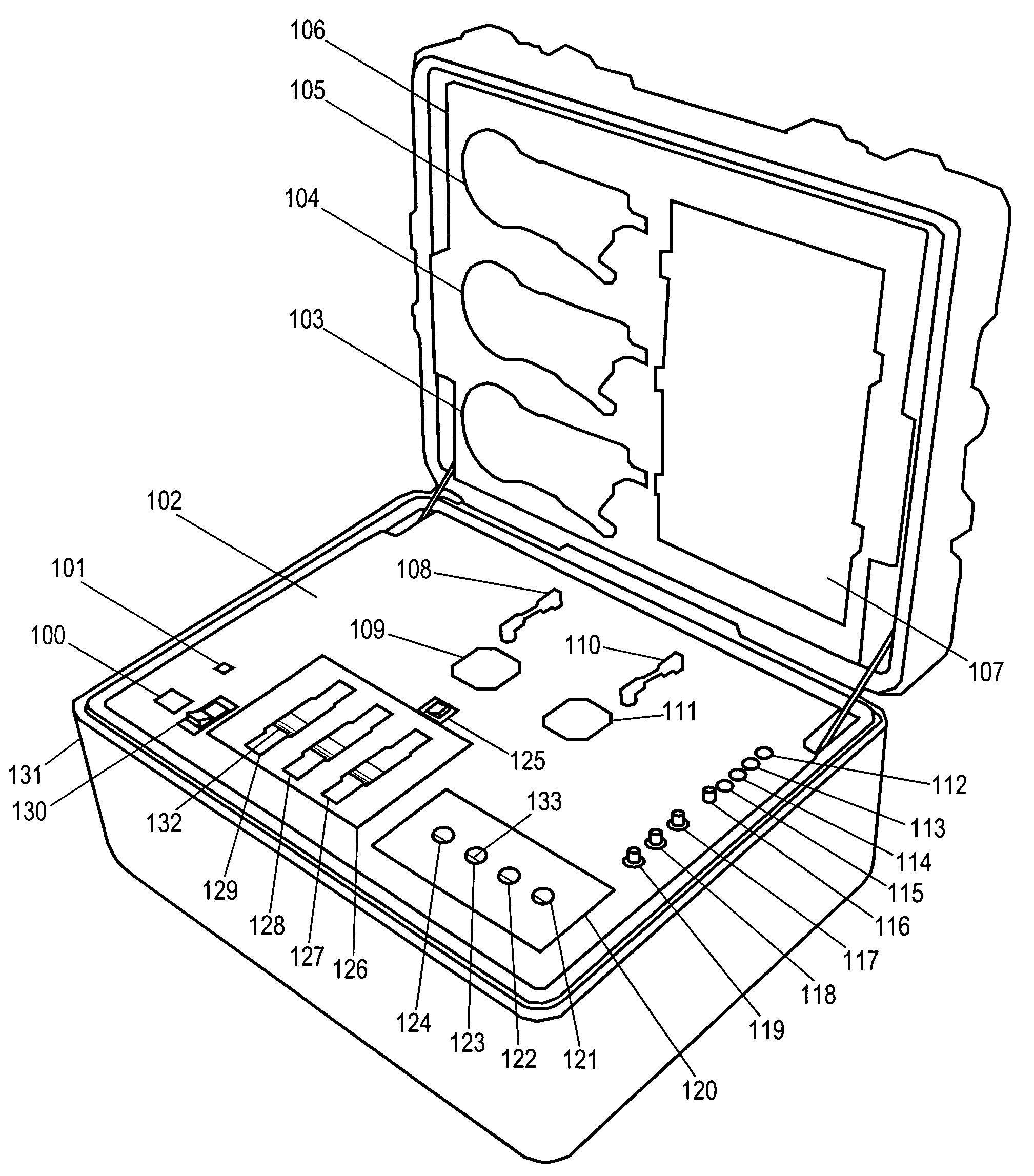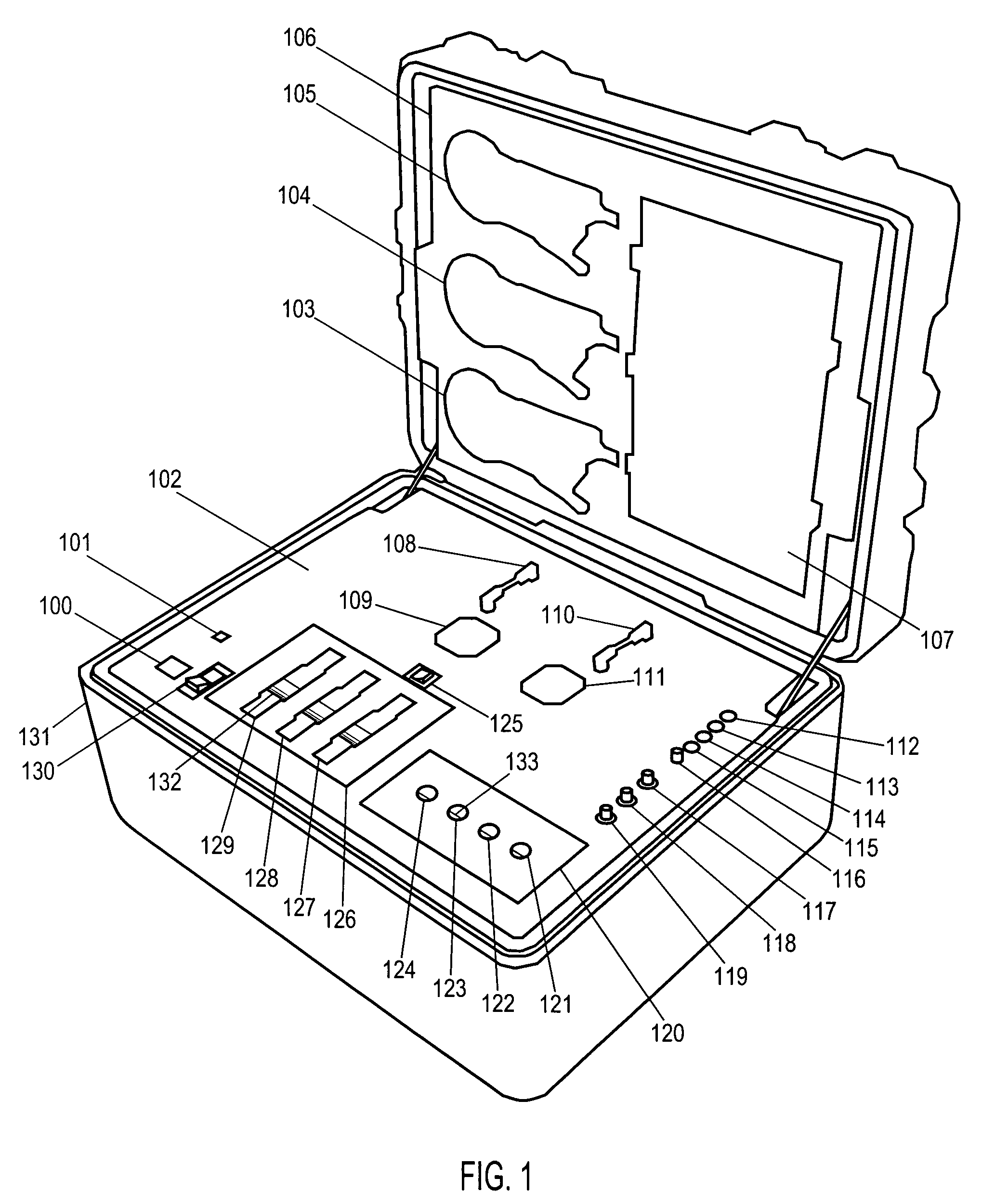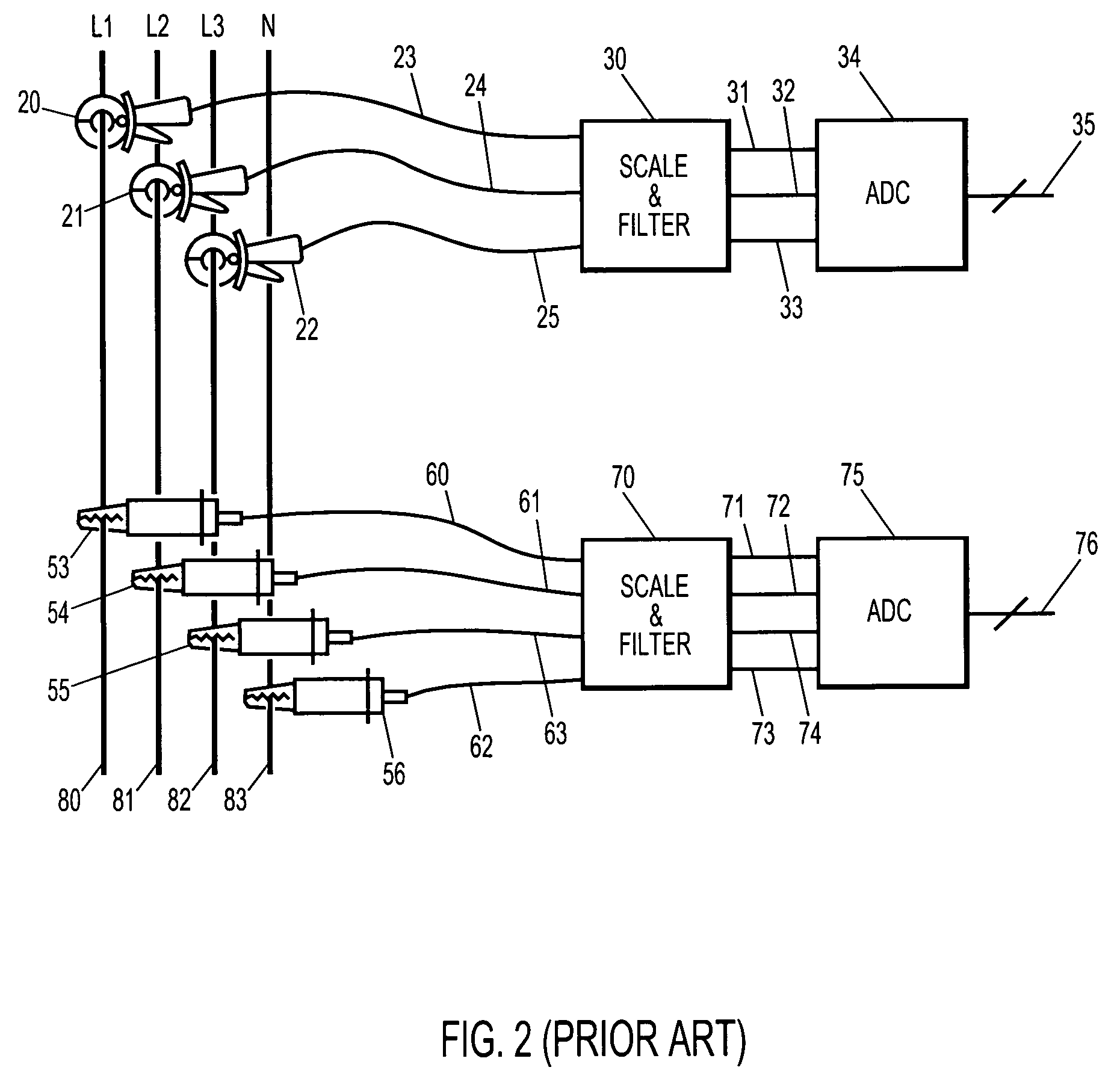Harmonics measurement instrument with in-situ calibration
a measurement instrument and in-situ calibration technology, applied in the direction of instruments, multi-tester circuits, speed/acceleration/shock measurement, etc., can solve the problem of exactly the wrong conclusion about the apparent reversal of the direction of harmonic power flow, and the distortion of voltage and current, etc. problem, to achieve the effect of reducing the cost of a highly stable and accurate instrumen
- Summary
- Abstract
- Description
- Claims
- Application Information
AI Technical Summary
Benefits of technology
Problems solved by technology
Method used
Image
Examples
Embodiment Construction
—DESCRIPTION
[0037]Turning first to FIG. 1, we see a representative embodiment of the present invention. The instrument consists of an instrument panel 102 and a storage lid 106 above. The storage lid 106 contains spaces 103,104,105,107 to store the current transducers, voltage probes, and other components when not in use.
[0038]A key element of the present invention is the built-in current calibration unit 126, which contains a tube 132 through which the current loops 12, seen in FIG. 3, are wound. This tube 132 is preferably constructed a material that is magnetically transparent and electrically insulating, such as polycarbonate resin thermoplastic manufactured by the General Electric Company of Fairfield, Conn., under the trademark Lexan. The outside diameter of this tube is preferably selected to mechanically match the inside diameter of the current transducers 20,21,22 shown in FIG. 3. During in-situ calibration, the current transducers 20,21,22 are inserted through slots 127,12...
PUM
 Login to View More
Login to View More Abstract
Description
Claims
Application Information
 Login to View More
Login to View More - R&D
- Intellectual Property
- Life Sciences
- Materials
- Tech Scout
- Unparalleled Data Quality
- Higher Quality Content
- 60% Fewer Hallucinations
Browse by: Latest US Patents, China's latest patents, Technical Efficacy Thesaurus, Application Domain, Technology Topic, Popular Technical Reports.
© 2025 PatSnap. All rights reserved.Legal|Privacy policy|Modern Slavery Act Transparency Statement|Sitemap|About US| Contact US: help@patsnap.com



